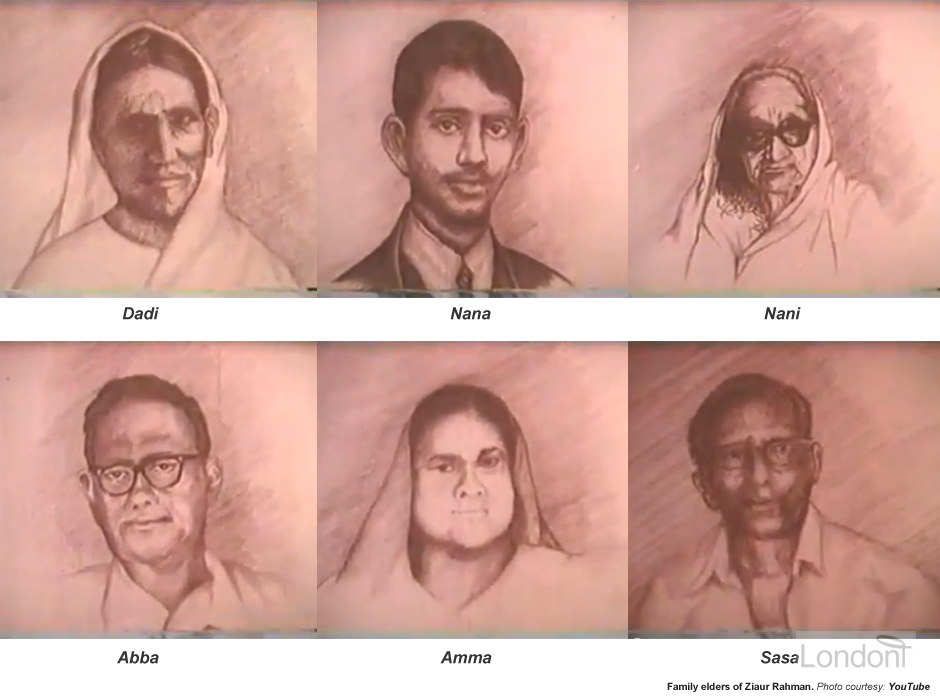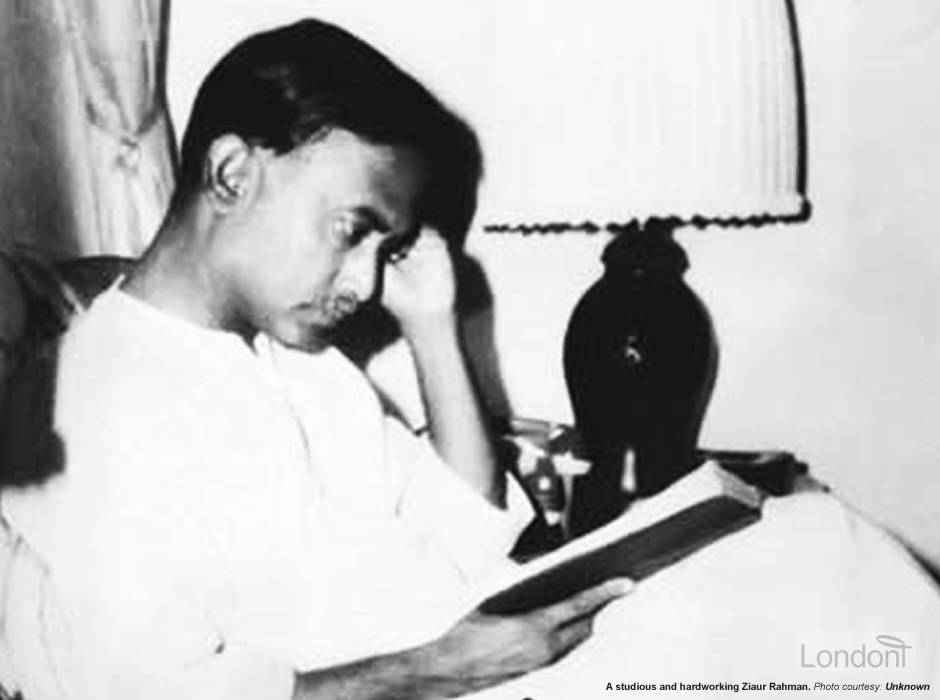
Early life of "komol"
Last updated: 10 October 2017 From the section Ziaur Rahman
Ziaur Rahman, popularly known as Zia, was the second son of Mansur Rahman and Jahanara Khatun. His paternal grandparents are Moulvi Kamal Uddin and Misirun Nessa and maternal grandparents are Abul Kashib and Rahima Khatun. Zia had four brothers and sisters.
His father Mansur Rahman was a chemist who specialised in paper and ink chemistry and worked for a government department in Kolkata (previously spelt Calcutta). As a child Ziaur Rahman, nicknamed Komol, was reserved, shy, quietly spoken, and intense in many respects. His early childhood was spent partly in the rural area of Bogra and partly in Calcutta (now Kolkata).
When Calcutta became the target of Japanese air strikes in 1940, like many urban Bengali families with rural links Mansur Rahman sent his family to his ancestral home in the small town of Bogra in northern Bengal. After Germany surrendered and the Japanese threat to Kolkata diminished, Mansur Rahman brought his family back and enrolled Zia in one of the leading boys schools of Calcutta - Hare School - where Zia studied until the independence and partition of India in 1947. On 14 August 1947, Mansur Rahman, like many Muslims working for the old British government of India, exercised his option to work for the new state of Pakistan and moved to Karachi, the first capital of Pakistan located in Sindh, West Pakistan.
Zia had to leave the Hare School in Kolkata and became a student of the Academy School in Karachi. He spent his adolescent years in Karachi and completed his secondary education from that School in 1952. Growing up, Zia wanted to become a doctor and help people. But after seeing his sasa (paternal uncle) Captain Dr. Mumtazur Rahman return from war, he was inspired to enroll into the Pakistan Military Academy. So in 1953, he got himself admitted into the D.J. College in Karachi. In the same year he joined the Pakistan Military Academy (PMA) at Kakul as an officer cadet in Tariq Company, Platoon Number 5.
Zia's character and style as one of the most effective leaders in the underdeveloped world was largely shaped by the issues, attitudes, and events during his years at Hare School. Subhas Bose, a former president of the All-India Congress Party, and Mohandas K. Gandhi were the two charismatic leaders of India whose lives baffled the young students. For trying to use the Japanese to force the British out of India, Bose was regarded a hero by the students, but the British and their supporters in India considered him a traitor for his collaboration with the Japanese. To most of the Hare School boys treason and patriotism did not seem to make much sense. Nor did Gandhi's open support of India's involvement in British war efforts clarify the appropriate role of India's leaders. What dismayed many students, particularly Ziaur Rahman, most was the inability of the authority figures – teachers, parents, and leaders – to clarify the issues or to help achieve a consensus in regard to what was a just policy.
After the war the political situation became even more amorphous. Gandhi's Congress Party and Muhammad A. Jinnah's Muslim League Party, representing the two main communities of India—Hindu and Muslim—failed to come to an agreement about sharing power in the future independent republic of India. When Syed Ahmed's two-nation theory became a reality after the referenda of 1946 which ensured the division of India the life of Muslim boys in Hare School became almost intolerable. Having lost faith in mutual cooperation and sharing as means to diffuse tension and resolve conflicts, Zia took it upon himself to justify the impending creation of Pakistan and, in the process, often became engaged in fist fights. An otherwise reserved and somewhat introverted boy of 11 often took on older school bullies and beat them.
Communal conflicts, political uncertainty, and family dislocation convinced Zia of the need for changes which the leaders seemed to be unable to bring about. During his later schooling in Karachi's D.J. College and the Pakistan Military Academy at Kakul he was struck by the economic disparities between the Bengali East Pakistan and non-Bengali West Pakistan that resulted in inequities and deprivations being suffered by East Pakistani Bengalis.

Excel in Pakistani military
Graduating from the Pakistan Military Academy at 12th PMA Long Course in 18 September 1955 in the top 10% of his class, Ziaur Rahman was commissioned as a second lieutenant in the Pakistan Army.
Zia went to East Pakistan on a short visit and was amazed by the negative attitude of the Bengali middle class towards the military, which consumed a large chunk of the country's resources. The low representation of the Bengalis in the military was largely due to discrimination, but Ziaur Rahman felt that the Bengali attitude towards the military perhaps prevented promising young Bengalis from seeking military careers. As a Bengali army officer he became a staunch advocate of military careers for Bengali youth. Zia argued that Bengali attitudes would change when they were in a position to share the resources and power of the military which was traditionally enjoyed by West Pakistanis, particularly those from the Punjab and Northwest Frontier provinces.
After serving for two years in Karachi, he was transferred to the East Bengal Regiment in 1957. He attended West Germany and UK military training schools. He also worked in the military intelligence department from 1959 to 1964.
 Pakistan Army ()
Pakistan Army ()  East Bengal Regiment (EBR) ()
East Bengal Regiment (EBR) ()
